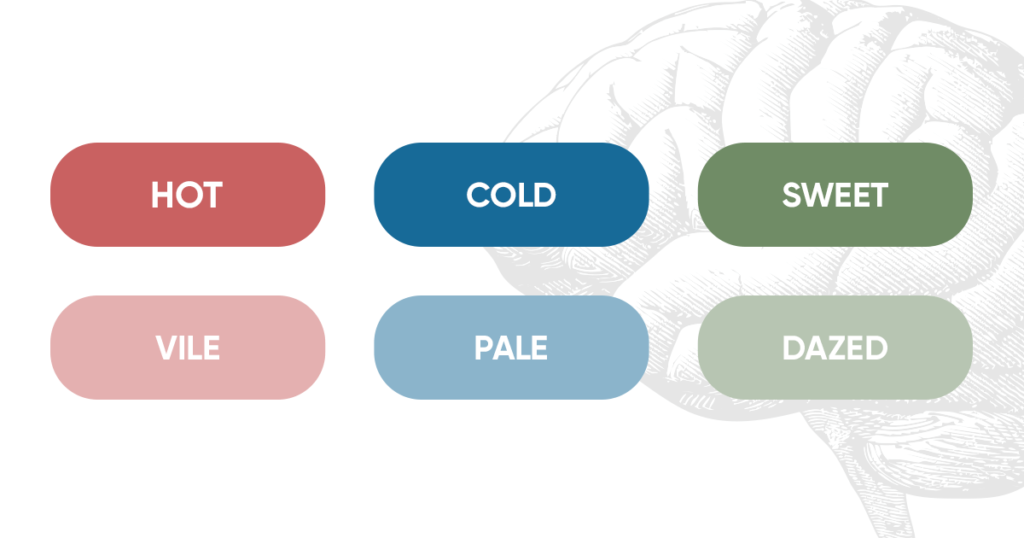
The Six Types of Alzheimer’s Disease
Determining if you have Alzheimer’s disease does not help you to avoid it or reverse it. Instead, determining why you have Alzheimer’s is key to developing a treatment plan. As we have learned, there are at least 36 contributors to cognitive decline. Most people who already have Alzheimer’s disease or MCI (mild cognitive impairment, the harbinger of Alzheimer’s) or SCI (subjective cognitive impairment, which precedes MCI) turn out to have between ten and twenty-five contributors to their cognitive decline. Blocking and reversing these contributors has proven effective in improving our participants’ brain health assessments, even as multi-billion dollar drug trials fail to have any effect.
Beyond identifying many contributors to cognitive decline, we’ve found there are also different groups of factors that contribute and based on these groupings there are distinct types of Alzheimer’s disease. In fact, we now believe there are 6 different types of Alzheimer’s. So, while pharmaceutical companies continue to try to treat all Alzheimer’s patients the same way, we can instead individualize our treatments according to the type of Alzheimer’s and contributing factors.
The six types of Alzheimer’s disease include:
- Type 1 Alzheimer’s is inflammatory, or hot, and driven by ongoing inflammation. In fact, one of the major mediators of the inflammatory response is called NFκB (nuclear factor kappa-light-chain enhancer of activated B cells), and this increases the production of molecules that produce amyloid, so there really is a direct link from inflammation to Alzheimer’s.
- Type 2 Alzheimer’s is atrophic, or cold, and driven by suboptimal levels of nutrients, hormones, or trophic factors (cell growth factors like nerve growth factor). Simply put, your brain is not receiving enough of the right building blocks to maintain your brain’s five hundred trillion (500,000,000,000,000) synaptic connections so cognitive problems ensue.
- Type 1.5 Alzheimer’s is glycotoxic, or sweet, and driven by high blood sugar or high fasting insulin. We call this type 1.5 because it has features of both type 1 and type 2: chronic inflammation (type 1) occurs because the glucose actually attaches to many of your proteins causing an inflammatory response. Reduced trophic support (type 2) occurs because your brain cells become less sensitive to insulin, which is a critical growth factor for them.
- Type 3 Alzheimer’s disease is toxic, or vile, and driven by exposure to toxins such as mercury, toluene, or mycotoxins (yes, exposure to some mold can cause Alzheimer’s through toxins made by certain molds such as Stachybotrys and Penicillium). Since we are exposed to toxins, we all experience this risk to a greater or lesser degree, so the key is to minimize exposure, identify the toxins to which we are exposed, and increase excretion and detoxification of them.
- Type 4 Alzheimer’s disease is vascular, or pale, and driven by cardiovascular disease. Indeed, vascular leakiness represents one of the earliest changes identified in Alzheimer’s disease.
- Type 5 Alzheimer’s disease is traumatic, or dazed, and driven by head trauma—whether from a traffic accident or a fall or even repeated minor head injuries during sports.
You can see from these different types of Alzheimer’s disease, and the causes of each one, that virtually all of us are at some risk for Alzheimer’s, and indeed, this is one of the reasons that it is such a common disease. With the many toxins to which we are exposed, the processed foods, the high-carbohydrate and unhealthy fat content of the SAD (standard American diet), the leaky gut so many of us have, and the lipid abnormalities (“cholesterol,” although the cholesterol itself is actually not the problem), most of us have a significant risk for Alzheimer’s disease. The good news is that nearly all of us can avoid or reverse the problem, now that we understand the contributors. To do that, we simply need to address the underlying drivers of the disease process— it’s like patching thirty-six holes in your roof, and the earlier we do this, the easier it is to achieve success.
The overall goal of Alzheimer’s treatment can be summarized as removal, resilience, and rebuilding: removal of the exposures contributing to cognitive decline, resilience resulting from optimal health support, and rebuilding of the neural network.
As is laid out in The End of Alzheimer’s Program and our protocols, here’s how we do that:
- First, we want to address insulin resistance.
- Second, we want to get into ketosis.
- Third, we want to optimize all nutrient, hormone, and trophic (growth factor) support.
- Fourth, we want to resolve and prevent inflammation.
Understanding the different types of Alzheimer’s and your risk factors will help you prevent cognitive decline. If you’re interested in learning more, Dr. Dale Bredesen’s new book The End of Alzheimer’s Program and our science of Alzheimer’s page go into greater depth.

